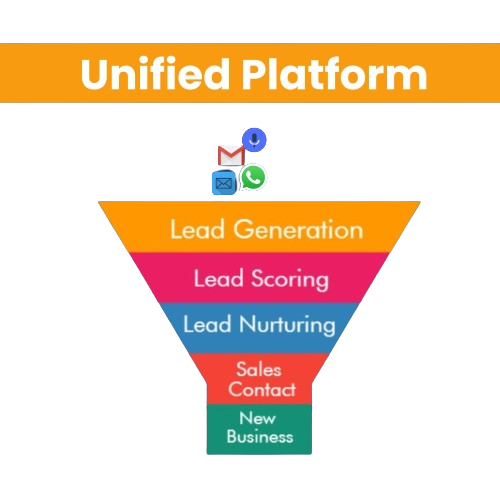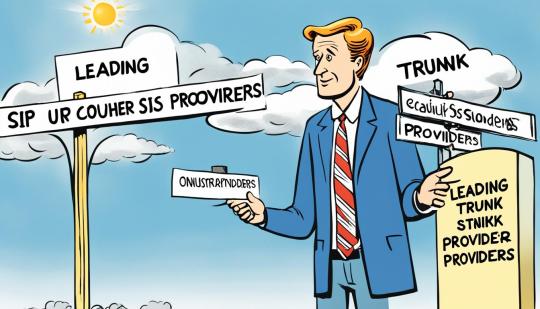#Unified Communications
Text

Hotel benefits from cloud-enabled enterprise software, as they can access their reservations or hotel services quickly and securely. Hotel owners benefit from integrating PhoneSuite Voiceware Enterprise Software with the cloud because it offers a scalable solution. Read More...
#hotel cloud integration#cloud integration#cloud pbx#cloud based system#cloud Computing#Cloud pbx system#Unified Communications#voip voiceware#hotel phones#phone system#phone calls#phonesuite voiceware#voiceware by phonesuite#hotel phone installation#hotel pbx#voip pbx#phonesuite pbx#voiceware pbx#cloud technology#Voiceware#Hotel VoIP#phone suite phone system#hotel hospitality#hotel industry#hotel phone#pbx phone system#phone pbx system#phone systems#phonesuite#SIP Trunking
8 notes
·
View notes
Text
6 notes
·
View notes
Text
State of the UC Union
Unified Communication and Collaboration (UC&C) is a combination of various communication methods and collaboration tools such as virtual whiteboards, real-time audio and video conferencing and enhanced call control capabilities to improve efficiency in the workplace. It provides a collection of easy-to-use solutions that can be implemented in various organizations to ensure that the end user receives a nearly real-time collaboration experience that works efficiently, smoothly and securely.
Video collaboration has been evolved from hardware-based codecs of traditional Polycom and Cisco Systems to more software driven solution of Microsoft Teams, Zooms, Google Meets, WebEx, post the pandemic. A lot of the solutions have now been replaced with simpler easier to deploy solutions for small meeting rooms, mid-size meeting rooms as well as larger boardrooms, meeting rooms, training rooms and large venue spaces such as Auditoriums and event spaces. However, the challenges of designing, executing and implementing the technologies and the user experience still remain. The intend of this whitepaper is to ensuring the reader to make the right decision based on today’s available technology. Video conferencing has become an increasingly important aspect of today’s world, as many organizations are transitioning to hybrid working environments. It has greatly aided in connecting people over a phone call where people can experience real-time video conferencing features while being located in different remote locations which would not be possible with Video conferencing platforms.

Types of Video Conferencing:
Telepresence Video Conferencing System
Integrated Video Conferencing System
Desktop Video Conferencing System
Video Collaboration Platforms:
Zooms
Microsoft Teams
Google Meets
Cisco
WebEX
What are Native and Non- Native Solutions. Why is it important in a Video Collaboration system?
Video conferencing is a live audio-visual connection between two or more remote parties over the internet that simulates a face-to-face meeting in real-time. In the business world, desktop video conferencing is a core component of Unified communications platforms that also include calling and messaging capabilities. Standalone on-premises and cloud-based video conferencing platforms are also available from numerous vendors who support desktop and room-based Video conferencing solutions with the ability to embed them into business applications, such as Telehealth, customer service and distance learning, etc.
The Primary difference between a Native and a Non-Native system is the user experience. Post Work from home and Back to office systems imply that the end users wants a user interface (IPAD, OEM’s touch panel, etc..) to have the same familiar look and feel that they are dialing/ joining directly from their laptop. Native user experiences also allow for a seamless connection to users within the enterprises in terms of a active directory integration as well. These native integrations have to be certified by the certified solution provides (Microsoft Team, Zooms, etc…) as a part of being through the ecosystem.
Though more expensive, native systems offer a more seamless experience to the management. Non-Native systems can be simply a Video collaboration bar in a room with a PC behind the display, essentially the PC is a desktop/ user laptop that allow content sharing as well as dialing/joining into the enterprise (As the main UC Engine). Non-native applications are easy to deploy, lower cost to maintenance as well.
Differences between Native and Non-Native Solutions
Hard Codec Running Native UC Platform Modes UC hardware often runs in “Native Mode,” meaning that the built-in Windows/Mac or Android computer is running a single UC Platform application such as Microsoft Teams or Zoom. The system is “locked in” to that platform. This is a great option if your business is already using a soft client version on employees’ laptops, as you essentially just extend this experience to the meeting room. Employees can then make a Zoom call from their laptops, or a Zoom call from a conference room’s dedicated “Native” platform. They are already familiar with the UI and so the transition to a hardware version feels seamless.
Soft codec Running Native UC Platform Modes
Soft codec systems are more commonly known as cloud or web-based video conferencing software. They’re “soft” as they don’t need codec hardware to work, and “codec” refers to devices or programs that compress and decompress data. It just needs a USB peripheral device such as USB camera, USB microphone and thin client PC in which all the software platforms can be loaded and they can initiate the call using wireless keyboard and mouse.
Unified Communication & Collaboration Tools for Native Interface
Zoom Rooms Zoom Rooms, the Modern Hybrid workspaces for Teams, brings HD video collaboration into any space – in the office, the classroom, or at home – and allows in[1]person and remote participants to interact in real-time. Zoom Rooms are the conference room experience you’ve always wanted, making it simple to start a meeting, book a room, and share content. Bring high-quality video, audio, and web conferencing to any sized room or workspace. Advanced features like Zoom Kiosks (virtual receptionist), voice commands & room controls on your mobile device. Enabling the hybrid workforce with features like Smart Gallery and Workspace Reservation. Google, Office 365 & Exchange calendar integrations support room booking, room status, upcoming meetings list, and more.
Workspace Reservation
Wireless sharing with proximity detection
Scheduling Displays
Digital Signage
Smart collaboration tools to keep projects moving Work from anywhere
Microsoft Teams
Microsoft Teams is an enterprise-ready unified communications (UC) platform. Teams connects people everywhere, on Windows MAC and other operating systems including mobile devices, as part of their everyday productivity experience. Microsoft Teams provides a consistent, single client experience for presence, instant messaging, voice, video and a great meeting experience. Microsoft Teams goes beyond communication. Easily find, share and edit files in real-time using apps like Word, PowerPoint and Excel inside Teams.
Chat: Share your opinion and your personality, send gifs, stickers and emojis in a group chat or in one-to-one messages.
Meet: Microsoft Teams offers real-time video conferencing. Host online meetings from 1:1, teams and live events up to 10,000 people.
Call: Make and receive calls with internal and external groups using Microsoft Teams Calling, Phone System, Calling Plan, or Direct Routing.
Collaborate: Store, share and edit files in real-time using apps like Word, PowerPoint and Excel in Microsoft Teams.
Digital whiteboard camera technology Kaptivo
Collaborate with remote team members with secure whiteboard/Interactive Display live sharing and video conference integrations.
Connect via Video Conference or Web Browser
Share Livestream of Whiteboard
Secure Whiteboard Image Capture
Save Snapshots and Track Changes
Kaptivo Cast
The Kaptivo Cast HDMI converter pairs with your Kaptivo to livestream vibrant, unobstructed whiteboard images to any HDMI capable input including traditional video codecs, displays, projectors, or lecture capture systems.
With the Kaptivo Cast, Kaptivo seamlessly integrates into meeting systems from all leading providers.
Quantum Leap Lite
The Leap Lite for Conference Room with Mounting Bracket is a step forward in conference cameras.
It features the camera and a display bracket mount that enables mounting your camera to the top or bottom of most display screens and monitors.
The lens of the leap lite with a 110-degree field of view that is suitable for most meeting or conference rooms.
No drivers are required to work on Linux, Windows, Android etc., the leap lite is also compatible with virtually all collaborative software platforms. And it connects your computer via USB, which makes it a simple plug[1]and-play video conference solution.
Quantum 4k PTZ camera with Condor Microphone
The advantages of Quantum camera is they provide stable product quality, 4k PTZ Camera from Value HD is the most cost-effective solution to provide effective communication.
With video in 4K Ultra HD and 82 degrees wide-angle lens, you can enjoy a superior resolution for all of your video conferences.
The 12X Optical Zoom is smooth and rapid and it delivers close-ups with superior resolution. With its patented 4K ISP solution, the lens of this PTZ camera can be controlled from a remote location. The software (Skype for business, Microsoft teams etc.) will be loaded in the thin client PC.
Display to be used to show Far end and Near end participants. During this mode Phoenix beamforming microphone with hemispheric pickup pattern in the room will get activated for audio pick up and reinforcement of far end audio shall be done via ceiling speakers.
The Phoenix Microphone is created with the vision of a clutter free conference table, the Condor sits above or below your monitor and with a pick-up range of up to 30 ft almost any conference room can use the Condor.
Conclusion
Enterprises today face a range of options, and we feel the top five takeaways are as follows:
Understand your vision for the Unified Collaboration rollout for your enterprise well in advance. (Spend time planning.)
Do trial runs with different manufacturers and end users to understand what works and what doesn’t across a range of budgets.
Deploy in small batches.
Understand the long-term value of the system as well as the compatibility with other systems that may come along the way that we may feel are going to be more software-driven.
Collect and analyze data around usage patterns using room schedulers, sensors on clouds, and analytics platforms to assist in improving the user experience as well as assisting with remote asset management and remote deployments.
To know more you can always contact Allwave AV on [email protected] or call us on 9372374450.
To view the complete document for State of the UC Union click here.

2 notes
·
View notes
Text

PhoneSuite is leading the industry with its revolutionary CRM integration that are designed specifically to help hotel marketers succeed with integrated marketing automation tools, communication suite reduction capabilities, data synchronization features, and more – let’s dive into how our Hospitality CRM Integration can take your hotel marketing to the next level. Read More....
#PhoneSuite’s Hospitality CRM Integration#Hospitality CRM#VoIP & CRM Integration#Unified Communications#CRM#phonesuite direct#phonesuite dealers#PBX System#VoIP#VoIP Phone#VoIP Advantages#Hotel Phone System#IP telephony#Ip Pbx System#Cloud Pbx System#Managed Voice#Pbx System in Texas#VoIP Phone System#VoIP technology#Telephony solutions#PBX Communications#SIP Trunks#Voice call#Voice Calls#Modern Telephone#VoIP Telephone#hotel hospitality#hotel VoIP#phone pbx system#Business Phones
5 notes
·
View notes
Text

Unified Communications as a Service (UCaaS) providers offer comprehensive solutions that integrate various communication tools and services into a single platform accessible via the internet. These services typically include voice calling, video conferencing, instant messaging, presence information, and collaboration tools like file sharing and screen sharing. By leveraging cloud-based technology, UCaaS providers enable organizations to streamline communication and collaboration processes while reducing infrastructure costs and complexity.
0 notes
Text
Why Should You Use an Omnichannel Contact Center?
Customers expect seamless and personalized interactions across multiple channels in today's hyper connected world. Businesses are turning to omnichannel contact centers to meet these demands—a strategic approach integrating various communication channels into a unified platform.

In this article, we'll explore why businesses should embrace omnichannel contact centers and the benefits they offer in today's competitive landscape.
1. Enhanced Customer Experience
According to a study by Aberdeen Group, companies with omnichannel engagement strategies retain an average of 89% of their customers, compared to just 33% for companies with weak omnichannel engagement. This statistic underscores the importance of providing a consistent and personalized customer experience across all channels. Omnichannel contact centers enable businesses to engage with customers seamlessly across voice, email, chat, social media, and other channels, enhancing satisfaction and loyalty.
2. Increased Efficiency and Productivity
Unified communications are crucial in boosting efficiency and productivity within contact centers. Agents can handle customer inquiries more effectively by integrating various communication channels into a single platform, reducing response times and streamlining workflows. Additionally, omnichannel contact centers leverage automation and AI-powered technologies to route inquiries to the most appropriate agent, further enhancing efficiency and productivity.
3. Improved Customer Insights
Omnichannel contact centers provide businesses with valuable insights into customer behavior and preferences. By consolidating data from multiple channels, companies can comprehensively understand customer interactions, preferences, and pain points. This data-driven approach enables businesses to tailor their services and marketing efforts to meet their customers' evolving needs, driving engagement and loyalty.
4. Cost Savings
According to research by McKinsey, maximizing satisfaction with customer journeys has the potential to increase customer satisfaction by 20% and lift revenue by up to 15% while lowering the cost of serving customers by as much as 20%. Omnichannel contact centers enable businesses to consolidate their communication infrastructure, eliminating the need for separate voice, email, chat, and social media systems. Additionally, companies can reduce their telecommunications costs by leveraging SIP trunk providers while ensuring high-quality voice communications over IP networks.
5. Future-Proofing your Business
As consumer preferences evolve, businesses must adapt to meet changing expectations. Omnichannel contact centers provide the flexibility and scalability needed to future-proof your business. Whether integrating new communication channels, scaling operations to accommodate growth, or adopting emerging technologies, omnichannel contact centers enable companies to stay agile and responsive in a rapidly changing market.
6. Flexibility and Scalability: Omnichannel contact centers offer flexibility and scalability, allowing businesses to adapt to changing customer needs and scale operations up or down as required.
7. Seamless Customer Journey: Omnichannel contact centers allow customers to enjoy a seamless journey across all touchpoints, leading to increased satisfaction and loyalty.
8. Real-time Insights: Omnichannel contact centers provide businesses with real-time insights into customer interactions, enabling them to make data-driven decisions and optimize their strategies accordingly.
9. Competitive Advantage: By delivering superior customer experiences, businesses gain a competitive advantage, attracting and retaining more customers than their competitors.
10. Brand Reputation: Omnichannel contact centers help enhance brand reputation by ensuring consistent and positive customer interactions, leading to increased trust and loyalty.

These additional benefits highlight the importance of adopting omnichannel contact centers in today's business environment.
Final Thoughts
In conclusion, omnichannel contact centers offer numerous benefits for businesses seeking to deliver exceptional customer experiences and drive operational efficiency. By leveraging unified communications, integrating multiple channels, and partnering with reliable SIP trunk providers, companies can enhance customer satisfaction, increase productivity, and position themselves for long-term success in today's competitive landscape.
Ready to revolutionize your call centre? Explore innovative solutions at https://www.telerain.com/ and take your customer service to the next level.
0 notes
Text
EPOS UNIFIED COMMUNICATION HEADSETS: IMPROVE YOUR COMMUNICATION EXPERIENCE
Feel the Smooth Integration Process:
EPOS Unified Communication Headsets facilitate easy and effective collaboration by seamlessly integrating with a range of communication platforms. Our headsets guarantee crystal-clear audio and dependable connectivity whether you’re using Zoom, Microsoft Teams, or any other unified communication programme.
Unmatched Sound Quality:
You can only anticipate the finest audio quality when using EPOS Unified Communication Headsets. With the help of our headsets’ cutting-edge noise-canceling technology, background noise is reduced and your voice is crystal clear. No matter how busy the office is or how noisy the surroundings are, you can rely on EPOS to provide unmatched sound clarity.
Improved Comfort for Extended Use:
We are aware that comfort is important, particularly for people who wear headsets for extended periods of time. EPOS Unified Communication Headsets are made with comfort in mind because of this. Our headsets are designed to be as comfortable as possible, with adjustable headbands and soft ear cushions to help you stay focused and productive all day.
BEST UNIFIED COMMUNICATION HEADSET
0 notes
Text
What Features Are Offered by Leading SIP Trunk Providers?

When it comes to business communication, having a reliable and efficient system in place is crucial. That's where SIP trunk providers come in. They offer a range of features that can enhance your communication infrastructure and take it to the next level. From VoIP integration and call routing to PSTN connectivity, leading SIP trunk providers have it all.
Imagine seamlessly integrating your VoIP system with your existing infrastructure. With SIP trunking, this becomes a reality. Leading providers offer robust VoIP integration capabilities, allowing you to streamline your communication channels and improve overall business efficiency. Whether you need unified communications or advanced call features, SIP trunk providers have the tools to make it happen.
PSTN connectivity plays a vital role in ensuring reliable communication between SIP trunks and traditional phone systems. With leading SIP trunk providers, you can count on robust PSTN connectivity that enables crystal-clear voice quality and uninterrupted communication. Their SIP gateways act as a bridge between the digital and analog worlds, ensuring seamless connectivity and eliminating any potential disruptions.
Efficient call routing is another feature offered by leading SIP trunk providers. They leverage advanced technologies to optimize call routing, saving you costs and improving the overall call experience. Intelligent call routing directs calls to the most appropriate endpoints, ensuring that they reach the right destination quickly and efficiently.
But it doesn't stop there. Leading SIP trunk providers also offer wholesale voice solutions for enterprise needs. Whether you require scalable and flexible communication options or comprehensive disaster recovery solutions, these providers have you covered. They understand the unique requirements of businesses and provide tailored solutions to meet those needs.
When selecting a SIP trunk provider, factors such as quality of service, security features, and service level agreements should also be considered. Leading providers prioritize these aspects, ensuring that you receive a reliable, secure, and high-quality communication experience.

In this article, we will delve deeper into the features offered by leading SIP trunk providers, explore real-world case studies, and provide you with a comprehensive guide on selecting the right provider for your business. Stay tuned to discover how partnering with a leading SIP trunk provider can revolutionize your business communication.
Understanding SIP Trunking Services
SIP trunking services, offered by reputable SIP Trunk Providers, have become a vital component of modern communication systems. Using the session initiation protocol (SIP), businesses can connect their private branch exchange (PBX) systems to the public switched telephone network (PSTN) through an internet connection.
With SIP trunking, traditional phone lines are replaced with virtual connections, allowing businesses to make and receive calls over the internet. This eliminates the need for separate physical phone lines and enables cost-effective and efficient communication.
One of the key benefits of SIP trunking is its flexibility. Unlike traditional phone systems, which have a fixed number of lines, SIP trunks can be easily scaled up or down to accommodate the changing needs of businesses. This scalability allows for better resource allocation and cost savings.
SIP trunking also offers improved call quality and reliability. By leveraging the internet for voice transmission, businesses can enjoy high-definition audio and clearer conversations. Moreover, SIP trunk providers often include robust redundancy and disaster recovery solutions, ensuring uninterrupted communication even during unforeseen events.
Another advantage of SIP trunking is its ability to enable PSTN connectivity. Businesses can connect their SIP trunks to traditional phone systems, allowing them to make and receive calls using existing hardware. This integration helps organizations leverage their existing infrastructure while enjoying the benefits of SIP trunking.
Overall, by adopting SIP trunking services from reputable providers, businesses can streamline their communication systems, reduce costs, and enhance their overall productivity. The next section will explore the integration of VoIP systems with SIP trunking, highlighting the benefits of this unified approach.
VoIP Integration for Enhanced Communication
SIP trunk providers play a crucial role in enabling seamless integration with VoIP systems, enhancing communication capabilities for businesses. By embracing VoIP integration, companies can leverage the power of unified communications to streamline their operations and improve overall efficiency.
Unified communications refers to the integration of various communication tools and platforms into a centralized system. This allows employees to access a wide range of communication channels, such as voice calls, video conferencing, instant messaging, and email, all from a single interface. With VoIP integration facilitated by SIP trunk providers, companies can achieve a higher level of collaboration and productivity.
Through the integration of VoIP systems, businesses can experience several benefits. Firstly, VoIP enables cost-effective communication by utilizing the internet for voice calls rather than traditional phone lines. This eliminates the need for separate phone systems, resulting in significant cost savings for businesses.
youtube
Additionally, VoIP integration allows for greater flexibility and scalability. SIP trunk providers offer businesses the ability to add or remove VoIP channels as needed, accommodating fluctuations in communication requirements. This scalability ensures that businesses can easily adapt to changing needs without incurring unnecessary costs.
Benefits of VoIP Integration:
Cost-effective communication through the use of internet telephony
Improved collaboration and productivity with unified communications
Flexibility and scalability to meet changing communication needs
Enhanced mobility and remote accessibility
Seamless integration with existing communication systems
In summary, VoIP integration facilitated by SIP trunk providers empowers businesses with efficient and unified communication solutions. By leveraging the benefits of VoIP systems, companies can optimize their communication workflows, enhance collaboration, and achieve a competitive edge in today's digital landscape.

Robust PSTN Connectivity for Reliable Communication
When it comes to business communication, reliability is key. That's why having robust PSTN connectivity is crucial for businesses seeking uninterrupted and dependable phone system connectivity. SIP trunk providers play a vital role in ensuring this robust connectivity through the use of SIP gateways.
SIP gateways act as the bridge between SIP trunks and traditional phone systems, allowing for seamless communication between the two. They enable businesses to connect their IP-based phone systems to the Public Switched Telephone Network (PSTN), ensuring that calls can be made and received without any disruptions.
With SIP gateways, businesses can leverage their existing phone systems while taking advantage of the cost savings and additional features provided by SIP trunking services. Whether it's making local or international calls, SIP gateways ensure that the communication is reliable and of high quality.
By partnering with a leading SIP trunk provider that offers robust PSTN connectivity, businesses can enjoy the benefits of a dependable and efficient phone system. They can confidently communicate with clients, customers, and partners, knowing that their calls will go through smoothly and without any hiccups.
Benefits of robust PSTN connectivity provided by SIP trunk providers:
Reliable and uninterrupted communication
Seamless integration between SIP trunks and traditional phone systems
Cost savings by leveraging existing phone systems
High-quality voice calls, both local and international
With robust PSTN connectivity provided by SIP trunk providers, businesses can achieve reliable and consistent communication, allowing them to focus on their core operations and serve their customers effectively.
Efficient Call Routing for Cost Savings
When it comes to business communication, efficient call routing plays a crucial role in ensuring seamless connectivity and optimizing costs. Leading SIP trunk providers offer robust call routing capabilities that enable businesses to streamline their communication processes and drive cost savings.
Call routing involves the intelligent distribution of incoming calls to the most appropriate destination within an organization. With SIP trunking, businesses can leverage advanced call routing features to enhance their overall communication efficiency. These features include:
Automatic call forwarding: Incoming calls can be automatically redirected to different extensions or departments based on pre-defined rules. This ensures that calls are efficiently routed to the most suitable individuals or teams, minimizing the need for manual intervention.
Time-based routing: Businesses can set up call routing rules based on specific time frames. For example, calls received outside of office hours can be redirected to voicemail or a designated on-call team, ensuring that no important calls go unanswered.
Geographical routing: SIP trunk providers also offer geographical call routing functionality. Calls can be directed to different locations or branches based on the caller's geographical location. This ensures that customers are connected to the most relevant and geographically suitable agents or representatives.
By implementing efficient call routing strategies, businesses can achieve significant cost savings. With intelligent call routing, organizations can reduce unnecessary call transfers and minimize the time spent on handling each call. This optimized call flow helps enhance productivity and customer satisfaction while reducing operational costs.
Moreover, leading SIP trunk providers offer flexible pricing models for their call routing services, allowing businesses to pay for the specific call routing features they require. This ensures cost-efficient communication solutions tailored to their unique needs and enables them to avoid unnecessary expenses.
With the right call routing capabilities provided by leading SIP trunk providers, businesses can maximize their communication efficiency, reduce costs, and deliver exceptional customer experiences.

Wholesale Voice Solutions for Enterprise Needs
SIP trunk providers offer wholesale voice solutions tailored to meet the specific communication needs of enterprises. These solutions enable businesses to streamline their voice services while enjoying cost savings and improved efficiency. Let's explore how wholesale voice, wholesale VoIP, and wholesale voice termination can benefit your enterprise.
Benefits of Wholesale Voice Solutions
Cost Savings: Wholesale voice solutions allow enterprises to purchase voice services in bulk at discounted rates, resulting in significant cost savings compared to traditional voice services.
Scalability: These solutions are highly scalable, allowing businesses to easily add or remove channels based on their changing communication needs.
Reliable Performance: Leading SIP trunk providers ensure high-quality voice termination services, providing crystal-clear voice communication for seamless business operations.
Flexibility: Wholesale voice solutions offer businesses the flexibility to choose the most suitable voice termination options, such as local, international, or toll-free numbers.
Centralized Management: Enterprises can manage their voice services centrally, reducing administrative complexities and enhancing overall control of their communication systems.
Wholesale VoIP and Voice Termination
Wholesale VoIP allows businesses to transmit voice calls over the internet. By partnering with a reputable SIP trunk provider, enterprises can benefit from wholesale VoIP services that offer extensive coverage, competitive pricing, and exceptional call quality. Wholesale voice termination refers to the process of routing voice calls to their intended destinations across various networks. SIP trunk providers ensure seamless voice termination, ensuring that businesses can connect with their customers and partners without any disruptions.
Scalability and Flexibility of SIP Trunking
When it comes to business communication, adaptability is key. That's why SIP trunking services from leading providers offer unmatched scalability and flexibility, allowing businesses to easily adjust their communication infrastructure as their needs evolve.
With SIP trunking, businesses can add or remove SIP channels effortlessly, enabling them to optimize their resources and costs. Whether you need to accommodate a sudden increase in call volume or scale down during slower periods, SIP trunking allows for seamless adjustments without disrupting your operations.
By partnering with reliable SIP trunk providers, businesses gain access to the internet telephony solutions they need to connect with customers, clients, and partners across the globe. Leveraging the power of SIP channels, organizations can establish high-quality voice calls and exchange data efficiently, regardless of geographical boundaries.
What's more, SIP trunking services enable businesses to integrate modern communication technologies seamlessly. By leveraging internet telephony, companies can enjoy the benefits of unified communications, combining voice, messaging, and other collaboration tools into a single, cohesive platform.
By harnessing the scalability and flexibility offered by SIP trunking, businesses can future-proof their communication systems, ensuring they can adapt to evolving customer demands and industry trends. Whether it's expanding to new markets, supporting remote workforces, or implementing advanced communication features, SIP trunking provides the foundation for growth and innovation.

In the next section, we will explore the robust redundancy and disaster recovery solutions offered by leading SIP trunk providers, ensuring uninterrupted communication even during unforeseen events.
Redundancy and Disaster Recovery Solutions
Leading SIP Trunk Providers understand the critical need for uninterrupted communication in today's business landscape. That is why they offer robust redundancy and disaster recovery solutions to ensure seamless operations even during unforeseen events.
Disasters such as natural calamities or system failures can significantly disrupt communication channels, leading to loss of productivity and potential revenue. However, businesses can mitigate these risks by partnering with SIP Trunk Providers that prioritize disaster recovery solutions.
Redundancy for Reliable Communication
SIP Trunk Providers leverage redundant infrastructure to maintain service availability and minimize downtime. By deploying multiple data centers located in geographically diverse regions, these providers ensure that even if one location goes offline, communication remains uninterrupted. This redundancy eliminates single points of failure, resulting in highly reliable and resilient SIP trunking services.
Furthermore, leading providers employ advanced failover mechanisms to seamlessly switch traffic to an alternate data center in case of any disruption. This automated process helps maintain continuity and enables businesses to overcome challenges without any significant impact on their communication systems.
Disaster Recovery Solutions for Business Continuity
In addition to redundancy, SIP Trunk Providers offer comprehensive disaster recovery solutions to safeguard businesses during emergencies. These solutions include backup strategies, data replication, and failover procedures to ensure that critical communication services are quickly restored in the event of a disaster.
By implementing disaster recovery plans and backup systems, SIP Trunk Providers can swiftly recover data, reroute calls, and restore services, minimizing any potential loss of communication and allowing businesses to resume operations promptly.
Benefits of Redundancy and Disaster Recovery Solutions
Ensures uninterrupted communication, enhancing business continuity
Minimizes potential revenue loss during downtime
Provides peace of mind knowing that communication channels are protected
Facilitates quick restoration of services, reducing downtime impact
Improves overall reliability and resilience of communication systems
By partnering with a SIP Trunk Provider that prioritizes redundancy and disaster recovery solutions, businesses can effectively safeguard their communication infrastructure, enabling them to stay connected even in the face of adversity.
Quality of Service and Service Level Agreements
When it comes to SIP trunking services, the quality of service (QoS) offered by SIP trunk providers is paramount. Whether you are a small business or a large enterprise, ensuring reliable and high-quality communication is essential for seamless operations.
Quality of service refers to the performance and reliability of the voice and data transmission over SIP trunks. It encompasses factors such as call clarity, minimal latency, and consistent bandwidth allocation. Achieving a high level of quality requires the expertise and infrastructure provided by reputable SIP trunk providers.
SIP trunk providers understand the significance of QoS and strive to deliver exceptional performance. They maintain robust networks and employ advanced technologies to ensure crystal-clear voice calls and smooth data transmissions. By prioritizing QoS, businesses can avoid issues like dropped calls, poor audio quality, and data loss.
In addition to QoS, service level agreements (SLAs) play a crucial role in guaranteeing reliable communication. SLAs are contracts between businesses and SIP trunk providers that outline the expected level of service. They define metrics such as uptime percentage, call completion rates, and response times for support inquiries.
With SLAs in place, businesses can have peace of mind knowing that their communication system is backed by guarantees. In the event of any service disruptions, providers are bound to resolve issues promptly, minimizing downtime and ensuring uninterrupted operations.
SIP Trunk Providers: Ensuring High-Quality Communication
Advanced network infrastructure: Leading SIP trunk providers invest in state-of-the-art network infrastructure to deliver superior quality of service. They prioritize traffic to minimize latency, jitter, and packet loss.
Bandwidth management: Providers allocate and manage bandwidth effectively to ensure consistent performance even during peak usage periods. This allows businesses to maintain optimal communication quality without bottlenecks.
Quality monitoring and optimization: SIP trunk providers continuously monitor and optimize their services to identify and address potential quality issues. They employ proactive measures to maintain the highest standards of communication quality.
Redundancy and failover systems: To ensure reliable communication, providers have redundant systems in place. In the event of any network or hardware failures, failover systems seamlessly switch to backup routes, minimizing service disruptions.
By partnering with a reputable SIP trunk provider, businesses can leverage their expertise and infrastructure to achieve exceptional quality of service. This translates into clearer calls, smoother data transfers, and enhanced overall communication experiences.
Next, we'll explore the security and encryption features offered by leading SIP trunk providers to ensure the privacy and protection of your communication. But first, let's take a moment to visualize the importance of quality of service in SIP trunking services.

Security and Encryption Features
When it comes to business communication, security is paramount. Leading SIP Trunk Providers understand this and offer robust security measures and encryption features to ensure the confidentiality and integrity of your communications.
One of the key security features offered by SIP Trunk Providers is Transport Layer Security (TLS). TLS encrypts the communication between your organization and the service provider, preventing unauthorized access and eavesdropping. It provides end-to-end encryption, keeping your data secure from the moment it leaves your network until it reaches its destination.
In addition to TLS, providers often employ Secure Real-time Transport Protocol (SRTP) for securing voice and video calls. SRTP encrypts the media streams, making sure that your conversations cannot be intercepted or tampered with. This adds an extra layer of protection to your sensitive business communications.
SIP Trunk Providers also implement firewalls and intrusion detection systems to safeguard against unauthorized access attempts. These security measures monitor and block suspicious activity, protecting your network from potential threats.
Furthermore, some providers offer multi-factor authentication (MFA) to enhance security. With MFA, users are required to provide additional verification, such as a unique code sent to their mobile device, before accessing the SIP trunking service. This reduces the risk of unauthorized access even if login credentials are compromised.
By leveraging the security features provided by leading SIP Trunk Providers, businesses can have peace of mind knowing that their communications are protected from external threats. Choosing a provider that prioritizes security ensures the confidentiality, integrity, and availability of your critical business communications.
SIP Trunk Provider Comparison: Factors to Consider
When choosing the right SIP trunk provider for your business phone solutions, it's essential to carefully evaluate and compare different options. To ensure that you make an informed decision, consider the following key factors:
Reliability: Look for SIP trunk providers that have a proven track record of reliable service and uptime. Check customer reviews and testimonials to get an idea of their performance.
Call Quality: High-quality voice calls are crucial for effective business communication. Consider providers that offer advanced technologies and prioritize call quality.
Scalability: Your business communication needs may change and grow over time. Choose a provider that allows easy scalability, enabling you to add or remove trunks as per your requirements.
Cost: Compare pricing plans offered by different providers, considering both setup costs and ongoing charges. Look for transparent pricing models without hidden fees.
Compatibility: Ensure that the SIP trunk provider is compatible with your existing phone system and equipment. This compatibility will simplify integration and minimize potential disruption.
Customer Support: Evaluate the level of customer support offered by each provider. You'll want a provider that provides timely and reliable support to address any issues that may arise.
Security: Business communication requires robust security measures to protect sensitive information. Look for providers that offer encrypted communication and have strong security protocols in place.
By carefully considering these factors, you can select a SIP trunk provider that best meets the unique needs of your business, ensuring seamless and efficient communication.

How to Select the Right SIP Trunk Provider
When it comes to implementing SIP trunking for your business, selecting the right SIP trunk provider is crucial for achieving seamless communication. With numerous providers available in the market, it can be overwhelming to choose the one that best fits your business needs. To help you make an informed decision, follow this step-by-step guide:
Evaluate your business requirements: Before selecting a SIP trunk provider, assess your communication needs. Consider factors such as the number of concurrent calls, anticipated call volume, and desired features like call routing and voicemail-to-email.
Research reputable providers: Look for SIP trunk providers with a proven track record and positive customer reviews. Research their industry experience, customer support services, and the range of features they offer.
Compare pricing: Obtain quotes from different providers and compare their pricing structures. Consider any additional fees, such as setup fees or charges for exceeding usage limits.
Evaluate call quality: Quality of service (QoS) is crucial for ensuring clear and reliable communication. Inquire about the provider's network infrastructure, redundancy measures, and service level agreements (SLAs) that guarantee call quality.
Inquire about network coverage: Ensure that the provider's network coverage aligns with your business requirements. If your business operates in multiple locations, confirm that the provider can offer reliable service in all those areas.
Consider scalability: Assess the provider's scalability offerings to accommodate your business growth. Check if they can easily add or remove SIP channels as your communication needs evolve.
By following these steps, you can confidently select the right SIP trunk provider for your business. Remember to prioritize factors such as reliable service, competitive pricing, and excellent customer support. With the right provider, you can enhance your business communication and streamline your operations.

Benefits of Partnering with a Leading SIP Trunk Provider
Partnering with a leading SIP Trunk Provider can offer numerous advantages and play a pivotal role in enhancing your business communication. These providers bring a wealth of value-added services, reliability, and expertise to ensure seamless connectivity and efficient operations.
One of the primary benefits of partnering with a leading SIP trunk provider is the access to advanced technology and infrastructure. These providers invest heavily in state-of-the-art equipment, software, and network infrastructure, enabling businesses to leverage the latest communication solutions. This ensures that your organization stays ahead of the curve in today’s fast-paced digital landscape.
A leading SIP trunk provider also offers unmatched reliability. By utilizing redundant networks, advanced failover systems, and disaster recovery solutions, they ensure uninterrupted communication even during unforeseen events or network disruptions. This ensures seamless connectivity and minimizes downtime, allowing your business to operate smoothly.
Furthermore, collaborating with a reputable SIP trunk provider grants access to a range of value-added services. These include features such as auto-attendants, call recording, call forwarding, and virtual phone numbers. These services enhance the functionality and efficiency of your business phone system, improving customer experience and overall productivity.
In addition to the technical aspects, partnering with a leading SIP trunk provider offers the advantage of expertise and support. These providers have a team of experienced professionals who understand the intricacies of SIP trunking and can provide valuable guidance and support. Whether it's setting up the system, troubleshooting issues, or optimizing performance, their expertise ensures that you get the most out of your SIP trunking investment.
Moreover, working with a trusted SIP trunk provider strengthens your business's security and compliance. These providers implement robust security measures, including encryption protocols and firewalls, to safeguard your communication channels and protect sensitive data. This peace of mind allows you to concentrate on your core business without worrying about potential security breaches.
By partnering with a leading SIP trunk provider, businesses also benefit from cost savings. As compared to traditional phone systems, SIP trunking offers significant cost advantages, including lower long-distance and international call rates, reduced maintenance costs, and simplified infrastructure. These savings can directly impact your bottom line and contribute to overall business growth.
In conclusion, partnering with a leading SIP trunk provider offers a plethora of benefits, such as advanced technology, enhanced reliability, value-added services, expert support, improved security, and cost savings. By leveraging the expertise and services provided by these providers, businesses can streamline their communication processes, enhance productivity, and stay competitive in the ever-evolving business landscape.
Conclusion
Choosing a leading SIP trunk provider is crucial for businesses seeking enhanced communication capabilities. Throughout this article, we have explored the key features offered by these providers and how they can benefit your organization. By understanding SIP trunking services and their integration with VoIP systems, businesses can achieve seamless communication across different channels.
Robust PSTN connectivity ensures reliable communication between SIP trunks and traditional phone systems, while efficient call routing capabilities can lead to cost savings and improved efficiency. Furthermore, wholesale voice solutions offered by leading SIP trunk providers cater to the enterprise needs of businesses, enhancing their communication infrastructure.
Scalability and flexibility are inherent in SIP trunking services, allowing businesses to adapt to changing communication requirements easily. With built-in redundancy and disaster recovery solutions, interruptions to communication are minimized, ensuring business continuity. Additionally, these providers prioritize quality of service through service level agreements, guaranteeing reliable and high-quality communication.
Security features and encryption protocols offered by leading SIP trunk providers ensure the confidentiality and integrity of business communications. By carefully considering the factors mentioned in this article and conducting a thorough assessment, businesses can select the right SIP trunk provider that aligns with their specific needs and goals. Partnering with a leading SIP trunk provider brings a host of benefits, including value-added services and expertise that optimize business communication.
In conclusion, choosing a leading SIP trunk provider lays a strong foundation for reliable, secure, and efficient business communication. By embracing high-quality SIP trunking services, businesses can streamline their communication systems and gain a competitive edge in today's digital landscape.
#SIP trunking services#VoIP providers#Business phone solutions#PSTN connectivity#VoIP integration#SIP channels#Session Initiation Protocol#Unified Communications#Internet telephony#SIP protocol#SIP gateway#Phone system connectivity#SIP trunk pricing#Call routing#PBX integration#SIP trunk setup#VoIP connectivity#SIP service providers#SIP trunk features#SIP termination#Youtube
1 note
·
View note
Text
Unified Communications integrates various communication tools like messaging, voice, video conferencing, and collaboration platforms into a seamless, unified experience. This contrasts with Traditional Communication Systems, which often involve fragmented and standalone solutions. The blog conducts a comprehensive comparative analysis, exploring factors such as scalability, cost-effectiveness, flexibility, and user experience.
0 notes
Text
Glassix

Glassix, an innovative AI-driven unified messaging platform, seamlessly connects customer conversations across a diverse range of digital channels. Whether it's through instant messaging apps, SMS, email, live website chat, or social media messages, Glassix ensures a cohesive communication experience.
Since its inception in 2015, Glassix has been at the forefront of revolutionizing customer interactions for a new era of business leaders. Catering to a vast clientele, the platform has expanded its reach across an extensive array of digital messaging channels.
At the heart of Glassix's offering is a secure, subscription-based platform equipped with a comprehensive set of features. The platform shines with its intuitive visual chatbot tools, designed for simplicity and accessibility, requiring minimal to no coding skills. This empowers customers to quickly engage with conversational AI capabilities, backed by the advanced GPT-4 technology. For those seeking a more tailored approach, the Glassix API provides the flexibility to craft customized experiences.
In collaboration with a worldwide network of integration partners, Glassix is committed to supporting a diverse range of clients, from well-established brands and rapidly growing enterprises to small businesses, all united in their quest for exceptional customer engagement.
Contact us:
One Boston Place, Suite 2600, Boston, MA , 02108
+1 (617) 683-1236
#AI Chatbot#WhatsApp Chatbot#Conversational AI#Unified Communications#Customer Support Software#Customer Service Software
1 note
·
View note
Text

Wishing you a Merry Christmas, a day that fills your heart with joy, May this Christmas be filled with happiness in all that you do, and may this joy continue the whole year through! Have a wonderful Christmas!
#Happy Christmas#Happy Holiday Christmas Season#Merry Christmas#VoIP Voiceware#hotel phones#phone system#hotel phone system#phone calls#Phonesuite Voiceware#Voiceware by PhoneSuite#hotel phone installation#Hotel PBX#VoIP PBX#Phonesuite PBX#Voiceware PBX#cloud technology#Unified Communications#Voiceware Platform#PBX Solution#Cloud PBX#Cloud Technology#VoIP Solutions#VoIP Services#cloud based system#Communications System#Business Telephone System#SIP Trunking#Technology#IP telephony#mobile Phones
11 notes
·
View notes
Text
Exploring the Importance of Excellent Technical Support

Introduction: Exploring the Importance of Excellent Technical Support
In today’s fast-evolving corporate environment, seamless audiovisual (AV) systems are not just beneficial—they are essential. However, the complexity of modern AV solutions demands more than just installation; it requires ongoing, proficient technical support to ensure optimal performance and longevity.
A report came out from an industry magazine called System Contractor News that showed that within the commercial integration business (Audio, Video and Collaboration), integrators by a vote of almost 3:1 valued quality technical support over any other vendor provided service. In short what the numbers showed was that as value added resellers, we are more interested in great service than low prices or specialized logistics support.
While our industry, similarly to many other industries says we are more interested in service than price, we often find ourselves in a tough predicament of trying to have both. In fact, with our interests always being in serving our customers, we often lump quality into the same conversation meaning we are trying to drive the lowest price, best service and highest quality products into every job we do. When you really think about it, this starts to sound like “Mission Impossible,” as most companies know that when you go for all three you are almost always going to come up short with one.
Putting Value In Technical Capabilities.
For customers making sizable investments in their technology spaces often price is put at the top of the list when choosing a vendor.
Generally this has to do with a perception that all the potential suppliers are the same, so why not just select on price. However, this may be a mistake because in the world of integration not all players are the same and perhaps one of the great differences is in the technical support we provide.
When we started off this article we talked about how integrators weigh the importance of tech support. Basically going up the food chain we want our manufacturer and distributor partners to help us when product issues creep up (and they do). Downstream we recognize our customers expect the same from us. When a room system or device has a problem you are looking to us to provide fast and productive support.
The Critical Role of Technical Support
Technical support goes beyond troubleshooting; it involves understanding the client’s unique needs and ensuring their AV systems enhance rather than hinder their operations. A study by AVIXA highlights that organizations with access to responsive and knowledgeable technical support report higher satisfaction and reduced downtime, directly impacting productivity and the bottom line.
Case Studies of Success
Consider the experiences of leading firms featured on platforms like Inavate and SCN 50, where technical support has transformed potential AV disasters into triumphs of technology. These case studies not only illustrate the capabilities of expert support teams but also demonstrate how they are instrumental in maintaining the integrity and functionality of complex AV setups.
Forward-Thinking Strategies
The future of AV is here with technologies like AI integration and automated diagnostics, further underscoring the importance of sophisticated technical support. As AV systems become increasingly integrated with IT infrastructure, the expertise of tech support becomes more crucial in navigating these integrations smoothly and effectively.
Conclusion
Investing in high-quality technical support is not just about fixing problems—it’s about preventing them. By choosing AV solutions backed by excellent support, businesses ensure they are equipped to handle anything the future holds, making it an invaluable component of any AV strategy.
Have a look at our page as well to know more about video collaboration- https://www.allwaveav.com/about-us/
0 notes
Text

In this blog post, we look at some emerging trends in 4G/5G/6G technology and explore how embracing them can help you develop your business into the hotel of tomorrow. Read More...
#voip technology#pbx system#5G and 6G#VoIP#5G network#6G Network#Cloud VoIP#VoIP Solution#voip provider#voip services#hotel phone system#voip phone#phonesuite dealers#phonesuite direct#voip advantages#hotel hospitality#business voip#voip solutions#SIP Protocol#Cloud-based#cloud based solutions#Cloud#business phones#pbx communications#cloudcomputing#Unified communications
0 notes
Text
unified communications as a service providers
Unified Communications as a Service (UCaaS) providers offer comprehensive solutions that integrate various communication tools and services into a single platform accessible via the internet. These services typically include voice calling, video conferencing, instant messaging, presence information, and collaboration tools like file sharing and screen sharing. By leveraging cloud-based technology, UCaaS providers enable organizations to streamline communication and collaboration processes while reducing infrastructure costs and complexity. This model allows businesses to scale their communication solutions more flexibly, accommodating the evolving needs of remote and distributed workforces.
0 notes
Text
10 Key Factors to Consider When Choosing the Right SIP Trunk Provider for Your Business
Selecting the right SIP trunk provider is a critical decision that can significantly impact your business communication infrastructure's efficiency, reliability, and scalability. As businesses increasingly adopt unified communications and omnichannel contact center solutions, choosing an SIP trunk provider becomes even more critical. Effective communication lies at the heart of every successful business operation. As organizations increasingly embrace unified communications and omnichannel contact center solutions, the role of SIP trunk providers becomes pivotal. Choosing the right SIP trunk provider is paramount for ensuring seamless connectivity, enhanced collaboration, and improved customer experiences.

Let's delve into statistics that affirm Unified Communications Solutions' growing significance in today's business landscape. With the global market projected to reach $167.1 billion by 2027 and a compound annual growth rate of 16.8%, businesses are increasingly recognizing the value of Unified Communications in enhancing collaboration, productivity, and efficiency across their operations. As organizations strive to stay competitive and agile in an evolving digital era, Unified Communications is a pivotal tool for driving seamless communication and connectivity.
Businesses must consider several key factors to find the provider that best aligns with their communication needs and business objectives to navigate the complex SIP trunking landscape.
Here are ten key factors to consider when selecting the right SIP trunk provider for your business:
Reliability and Quality of Service: Prioritize providers with a proven track record of reliability and high-quality service to ensure uninterrupted communication.
Scalability: Choose a provider that can scale with your business growth, accommodating increased call volumes and expanding communication needs.
Network Coverage: Evaluate the provider's coverage to ensure comprehensive geographical reach and reliable connectivity across locations.
Security Features: Look for SIP trunk providers that offer robust security features, such as encryption and authentication, to safeguard sensitive communication data.
Pricing Structure: Compare pricing plans and evaluate the total cost of ownership to find a provider that offers competitive rates and aligns with your budgetary requirements.
Support and Customer Service: Assess the provider's customer support offerings, including availability, responsiveness, and expertise, to ensure prompt assistance in case of issues or technical challenges.
Integration Capabilities: Consider the provider's ability to integrate with existing unified communications platforms and omnichannel contact centre solutions to facilitate seamless communication workflows.
Disaster Recovery and Redundancy: Ensure the provider offers disaster recovery solutions and redundant network infrastructure to minimize downtime and ensure business continuity in emergencies.
Compliance and Regulatory Requirements: Verify that the provider complies with industry regulations and standards, such as HIPAA for healthcare or GDPR for data privacy, to avoid potential legal and compliance issues.
Future-proofing: Choose a SIP trunk provider that embraces emerging technologies and innovation to future-proof your communication infrastructure and adapt to evolving business needs.
By carefully evaluating these key factors, businesses can select the right SIP trunk provider that meets their communication requirements, enhances productivity, and supports their long-term growth objectives. Selecting the right SIP trunk provider is crucial for businesses establishing an omnichannel contact center.

With SIP trunking, organizations can consolidate their communication channels into a unified platform, enabling seamless connectivity across voice, video, and data channels. By partnering with the right SIP trunk provider, businesses can ensure a robust and flexible communication infrastructure that supports their omnichannel contact center initiatives, driving enhanced customer engagement and satisfaction.
With the right SIP trunk provider, organizations can lay a solid foundation for future growth and success in an increasingly interconnected world.
Unlock seamless communication success.
As businesses navigate the complexities of modern communication, embracing Unified Communications is not just a choice but a strategic imperative. With its ability to foster collaboration, streamline operations, and drive innovation, Unified Communications stands poised to redefine the future of business communication. It's time to harness this transformative power and unlock new possibilities for success in the digital age.
Ready to unlock synergy and elevate your communication? Contact us at Telerain for a consultation and discover the dynamic power of Unified Communications and SIP Trunking. Your next level of communication excellence starts here:https://www.telerain.com/contact-us/.
Explore innovative call center solutions at https://www.telerain.com/.
About The Author: Telerain, your trusted partner in streamlined digital business communication solutions. Our integrated cloud software service combines a comprehensive suite of channels, including voice, SMS, fax, video, chat, and email, ensuring your business stays connected most efficiently and securely.
At Telerain, we prioritize the security and compliance of your communications. Our platform automatically addresses GDPR, PCI DSS, and HIPAA regulations, guaranteeing that all interactions are recorded and archived compliantly. It means you can focus on your business, confident that your communications meet the highest data protection and privacy standards.
Our user-friendly per-user-per-month Software as a Service (SaaS) model ensures flexibility without the burden of legacy technology costs and complexities.
0 notes